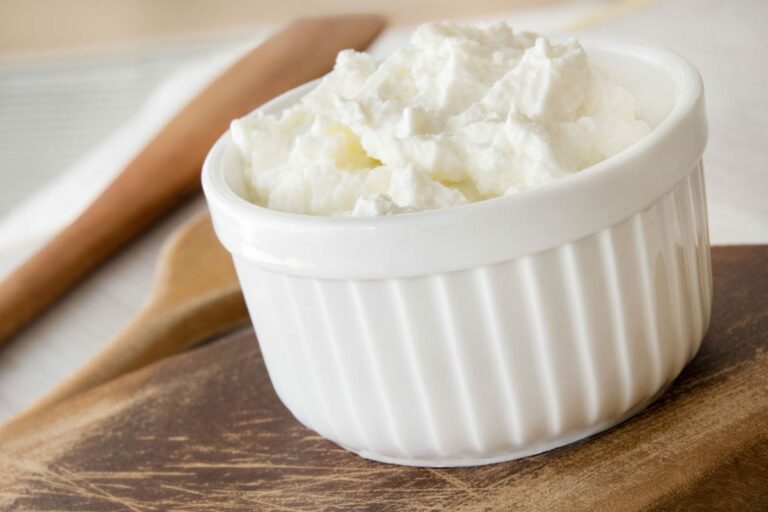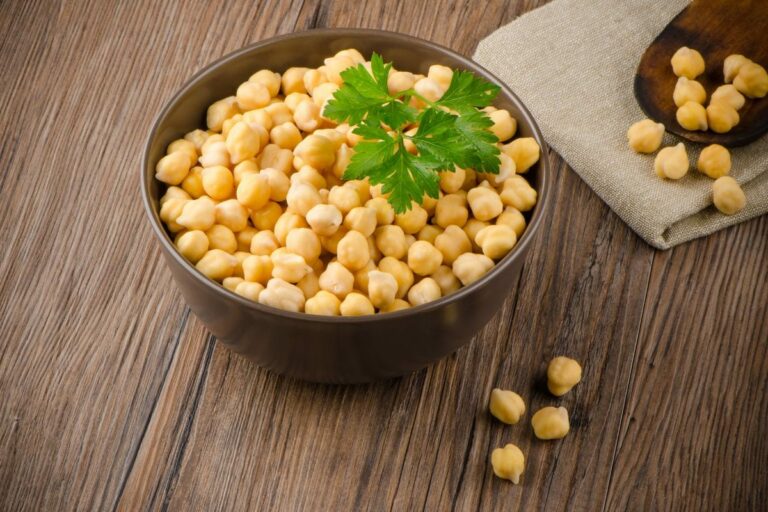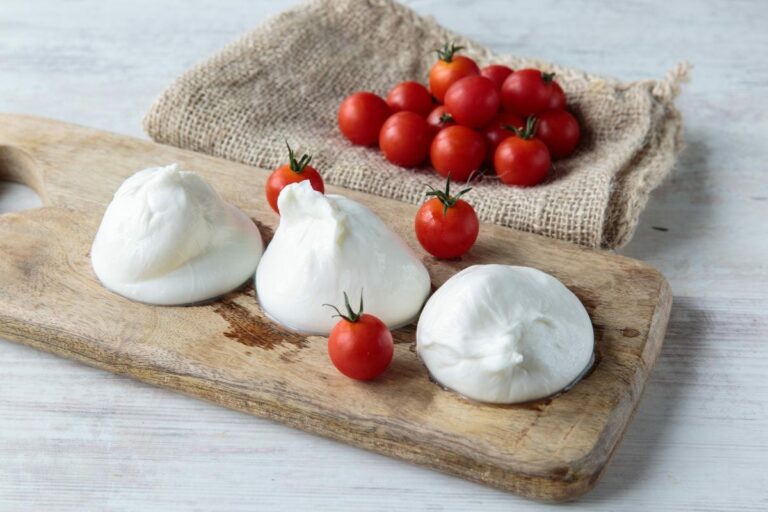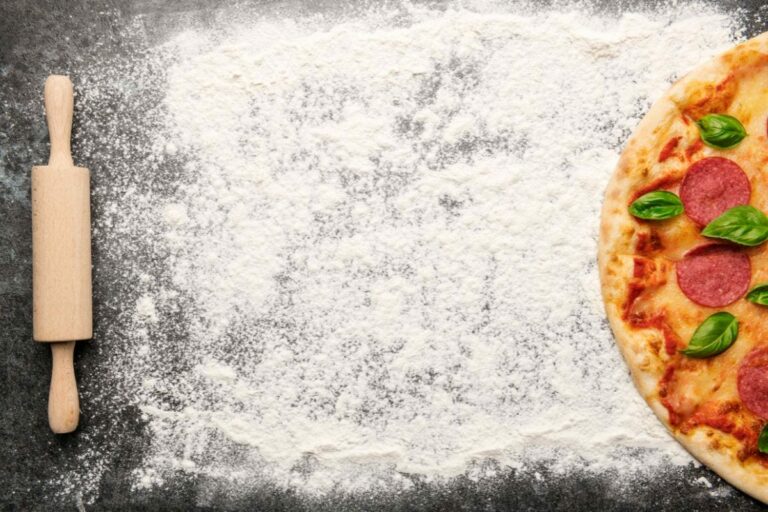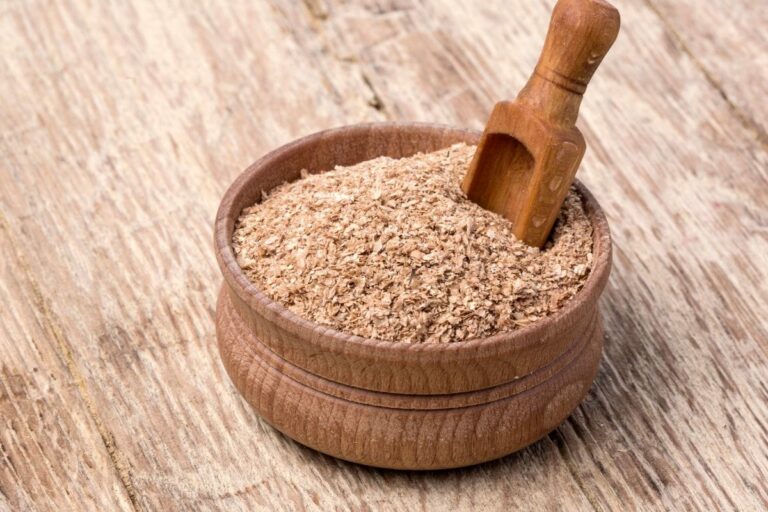Looking for a Benedictine Substitute? Try These Top-Rated Options Today!
Benedictine, a French herbal liqueur with a unique and complex flavor profile, is often sought after by mixologists and food aficionados alike. However, its availability can sometimes be limited or expensive in certain regions.
That’s where substitutes come into play! In this article, we will explore the best alternatives to Benedictine for use in cocktails and culinary creations.
From herbal mixers like Chartreuse to rich spirits like Drambuie, we have you covered with options that come close to replicating the essence of this exquisite liqueur.
Brief History Of Bénédictine
The story of Bénédictine, a revered herbal liqueur hailing from France, dates back to the 16th century. Some say it all began when a Venetian monk named Dom Bernardo Vincelli created this enticing concoction at the Benedictine Abbey in Fécamp, Normandy.
Over time, Bénédictine’s popularity grew exponentially thanks to its widespread use in both high-end culinary applications and extravagant cocktails served up during opulent soirées.
One particularly interesting anecdote involves Alexandre Le Grand rediscovering the recipe after it had been lost for decades following the French Revolution.
As we explore potential substitutes for this iconic libation, it is essential to appreciate its rich history and unparalleled taste attributes.
The Unique Taste Profile Of Bénédictine
Understanding the unique taste profile of Bénédictine is essential for both mixologists and food lovers alike. This exquisite French liqueur boasts a rich history dating back to 1510, when it was first crafted by Benedictine monks.
Made from a secret blend of 27 herbs and spices, Bénédictine offers a complex flavor that is hard to recreate or substitute in recipes.
For those who have had the pleasure of sipping on Bénédictine or enjoying it mixed into elegant cocktails like the Singapore Sling or Vieux Carré, you know there’s something special about this herbal elixir.
Its multifaceted flavor can be sweet at times while also delivering subtle bitter undertones that perfectly complement its warmth on your palate.
As a drink lover trying out different spirits and liqueurs, don’t shy away from incorporating Bénédictine into your next concoction! While finding suitable substitutes may prove challenging due to its complexity (as supported by Important Fact #10), experimenting with alternatives mentioned throughout our list above will help lead you closer to achieving desired flavor profiles that highlight the essence of this renowned French digestif.
The Value Of Versatility In Mixology
You may have noticed that mixology is an art form that requires creativity, experimentation, and a deep understanding of ingredients. One key aspect of successful mixology is versatility – the ability to use different spirits and liqueurs in various combinations to create unique and exciting flavors.
For instance, if you love the spicy sweetness of Bénédictine but want to try something new, consider using Drambuie instead. This Scottish honey liqueur has similar notes of heather and herbs but with an added touch of whiskey warmth.
Ultimately, being able to swap out ingredients and experiment with substitutions allows bartenders and home enthusiasts alike to craft truly original cocktails that challenge traditional expectations.
Comprehensive Guide To Bénédictine Substitutes
As interesting as the history and unique flavor profile of Bénédictine is, sometimes we need to find a substitute for this beloved herbal liqueur. There are several viable alternatives that mixologists and home bartenders can use to create delicious cocktails.
For example, Chartreuse Liqueur, with its blend of herbs and high alcohol content, makes an excellent substitute for Bénédictine in many recipes.
Brandy-based liqueurs such as Grand Marnier also provide a suitable replacement for Benedictine in cocktails or cooking recipes. And let’s not forget combining different liqueurs to make your custom blend! By using substitutes creatively, you can make mouth-watering drinks that rival any made using Bénédictine.
Quick Overview
| Substitute | Origin | Main Ingredients | Flavor Profile | Ideal Use |
|---|---|---|---|---|
| Chartreuse | France | 130 different plants, honey, saffron, and other sweeteners | Potent herbal, comes in milder (Yellow) and stronger (Green) versions | Gin-based drinks, whiskey-based cocktails, glaze for roasted meats, desserts |
| Galliano | Italy | Over 30 herbs and spices including star anise, vanilla, juniper berries, cinnamon | Sweet herbal | Cocktails, especially Harvey Wallbanger, chicken or seafood sauces, creamy pasta dishes |
| Strega | Italy | Over 70 different herbs including saffron, mint, juniper berries, fennel | Unique herbal flavor, balances sweet and bitter notes | Cocktails like Golden Nail, Singapore Sling, Corpse Reviver No.2, savory dishes like stews or pasta sauces, pairs well with roasted meats and vegetables |
| Drambuie | Scotland | Scotch whiskey, heather honey, herbs, and spices | Floral sweetness balanced by hints of smokiness and spice | Cocktails like Rusty Nail |
| Barenjager | Germany | Pure bee’s honey | Warm honey with hints of caramel and vanilla | Cocktails like Bee’s Knees or Hot Toddy, pairs well with citrus juices |
| Krupnik | Poland | Honey, spices, and vodka | Sweet and spicy | Hot apple cider, marinades or glazes for grilled meats like chicken or pork |
| Grand Marnier | France | Cognac brandy and bitter oranges | Sweet citrusy, with spicy notes of vanilla and oak | Wide variety of drinks, desserts, savory dishes, particularly well with chocolate |
| Chambord | France | Black raspberries, honey, vanilla extract, and herbs soaked in Cognac | Sweet raspberry | Cocktails like French Martini or Raspberry Gimlet, sweet dishes and desserts |
Herbal Liqueurs
As a lover of flavorful cocktails and unique liqueurs, I have found that herbal liqueurs are some of the best substitutes for Benedictine. These liqueurs typically feature a blend of different herbs and spices, delivering complex flavors that add depth to any drink.
For example, Chartreuse is a popular alternative to Benedictine with its vibrant green hue and equally distinctive taste.
Another great herbal substitute for Benedictine is Strega from Italy. This “witch’s brew” boasts over 70 different herbs including saffron which gives it its yellowish color.
It has a slightly bitter flavor profile making it perfect for sprucing up heavy cocktails like negronis or just adding richness to lighter drinks such as gin fizzes or daiquiris.
1. Chartreuse
Chartreuse is one of the best substitutes for Benedictine in cocktails and recipes due to its herbal flavor profile. Produced by Carthusian monks in France, Chartreuse comes in two varieties; Green Chartreuse and Yellow Chartreuse.
The former has a more potent flavor with higher alcohol content while the latter is sweeter and milder.
Yellow Chartreuse also differs from other yellow or gold-colored liqueurs like Grand Marnier or B&B Liqueur because it is made entirely from natural ingredients with no artificial colorings or additives.
The recipe consists of 130 different plants steeped in neutral alcohol before being distilled twice along with honey, saffron, and other sweeteners.
When using Yellow Chartreuse as a substitute for Benedictine, it pairs well with gin-based drinks like the Last Word cocktail or can add an extra layer of complexity to whiskey-based cocktails such as the Sazerac or Vieux Carré.
In cooking applications, it can be used as a glaze for roasted meats or incorporated into desserts like ice cream toppings or fruit compotes.
2. Galliano: Flavor Notes And Best Use Cases
Galliano is a sweet herbal liqueur with a unique flavor profile that makes it an excellent substitute for Benedictine in cocktails. Its distinctive taste comes from its blend of over 30 herbs and spices, including star anise, vanilla, juniper berries, and cinnamon.
One popular cocktail that uses Galliano is the Harvey Wallbanger, which traditionally consists of vodka, orange juice, and Galliano. The sweetness of the liqueur complements the tanginess of the orange juice perfectly, while the bitterness adds depth to the drink.
Aside from cocktails, Galliano can also be used in cooking to add complexity to dishes such as chicken or seafood sauces. It pairs particularly well with tomato-based sauces or creamy pasta dishes like fettuccine Alfredo.
3. Strega: Unveiling The Witch’s Brew
Strega is a delicious Italian liqueur that makes for an excellent substitute for Benedictine in cocktails and cooking. The bright yellow spirit is made with over 70 different herbs, including saffron, mint, juniper berries, and fennel.
Strega has a unique herbal flavor profile that balances sweet and bitter notes perfectly.
One of the most popular cocktails made with Strega is the Golden Nail, where it’s combined with scotch whiskey and lemon juice. You can also use Strega as a substitute for Benedictine in classic recipes like the Singapore Sling or Corpse Reviver No.2.
In cooking applications, Strega can add depth of flavor to savory dishes like stews or pasta sauces; it pairs well with roasted meats and vegetables too! So next time you’re looking for an alternative to Benedictine in your cocktail or recipe—consider giving this witch’s brew a try!
Honey And Spice Liqueurs
Honey and spice liqueurs are a great substitute for Benedictine as they offer a similar sweet, flavorful taste with hints of spices. Drambuie is one popular honey and spice liqueur that can be used in place of Benedictine.
It is made from Scotch whiskey, heather honey, herbs, and spices and has a rich amber color. Barenjager, on the other hand, is a German honey liqueur made with pure bee’s honey.
Krupnik also falls under the category of honey and spice liqueurs, originating from Poland. It features notes of clove, cinnamon, ginger root blended with natural Polish wildflower honey to give you a unique taste like no other.
These liqueurs add an extra layer of flavor bringing out an irresistible contrast in drinks or culinary recipes.
4. Drambuie: A Touch Of Scottish Character
One of the best substitutes for Benedictine is Drambuie, a Scottish honey and herb-infused liqueur that has been produced since the 18th century. Its unique blend of flavors makes it an ideal ingredient in cocktails such as the Rusty Nail, which combines Drambuie with Scotch whisky.
Drambuie is made from a secret recipe that includes heather honey, herbs, and spices from Scotland’s rugged landscape. This combination gives it a complex flavor profile with notes of floral sweetness balanced by hints of smokiness and spice.
For those looking to add a touch of Scottish character to their cocktails or recipes calling for Benedictine, Drambuie is an excellent option thanks to its distinctive flavor profile and versatility in mixology.
5.Barenjager: The German Honey Liqueur
Barenjager is a German honey liqueur that’s been around for centuries. Its name literally means “bear hunter,” and it’s said to have been enjoyed by hunters as far back as the 15th century.
Barenjager has a distinct flavor profile that sets it apart from other liqueurs. It boasts a rich, golden color and has an intense aroma of warm honey with hints of caramel and vanilla.
One way to enjoy Barenjager is in cocktails like the Bee’s Knees or Hot Toddy. Because of its honey flavor, it pairs well with citrus juices like lemon or grapefruit, which can balance out the sweetness.
6. Krupnik: A Polish Honey Delight
Krupnik is a Polish liqueur that’s made from honey, spices, and vodka. It has a sweet and spicy flavor profile that makes it an excellent substitute for Benedictine in cocktails and recipes.
One popular way to enjoy Krupnik is by mixing it with hot apple cider to make the perfect fall cocktail. The warm flavors of cinnamon and clove in Krupnik complement the sweetness of the cider perfectly.
Another great way to use Krupnik is by adding it into marinades or glazes for grilled meats such as chicken or pork.
While not as well-known as some other substitutes on this list, Krupnik’s distinct blend of natural ingredients provides culinary versatility that can be tailored according to personal preferences.
Brandy-Based Liqueurs
Benedictine is a unique herbal liqueur that has a flavor profile that’s hard to replicate. However, brandy-based substitutes can come pretty close. Grand Marnier, for instance, is a popular choice amongst bartenders due to its citrus and cognac combination.
This French liquor has been around since the late 1800s and offers a sweet orange flavor with spicy notes of vanilla and oak.
Another great option is Chambord – a raspberry-flavored liqueur made from black raspberries mixed with honey, vanilla extract, and herbs soaked in Cognac.
This smooth brandy-based spirit pairs well with gin or vodka-based drinks such as Raspberry Fizz or French Martini.
Lastly, B&B Liqueur is another excellent Benedictine substitute worthy of mention – it’s made by blending Benedictine liqueur with brandy giving it similar flavors but higher alcohol content– upwards of 40%.
7. Grand Marnier: Citrus And Cognac Combination
One of the most popular substitutes for Benedictine in cocktails is Grand Marnier. This sweet, citrusy liqueur is made from a blend of Cognac brandy and bitter oranges, giving it a complex flavor profile that works well in a variety of drinks.
Aside from its mixological applications, Grand Marnier can also be used as a cooking ingredient in everything from desserts to savory dishes. It pairs particularly well with chocolate and offers an interesting twist on traditional fruit sauces.
8. Chambord: Raspberry Richness
One of the most popular substitutes for Benedictine is Chambord, a sweet raspberry liqueur from France. With its rich and fruity flavor profile, it can add a delicious twist to cocktails that require Benedictine.
Chambord works well in drinks like the French Martini or Raspberry Gimlet, where the raspberry notes complement other ingredients.
In addition to cocktails, Chambord can also be used in sweet dishes and desserts such as cakes and crepes. Its natural fruitiness makes it an excellent complement to chocolate-based desserts or berries like strawberries or blueberries.
Overall, while it may not be an exact replica of Benedictine’s complex herbal flavors, Chambord offers its own delightful taste experience with its bold fruitiness and sweetness.
Other Alternatives
In addition to herbal, honey and spice, and brandy-based liqueurs, there are other alternatives you can try as a substitute for Benedictine. One creative solution is to combine different liqueurs to create your own unique blend that matches the flavor profile of Benedictine.
If you prefer non-alcoholic substitutions for Benedictine, you can use various ingredients like honey syrup or cinnamon syrup to add depth and sweetness to your drinks.
Of course, while these substitutes can come close in taste or be used creatively in place of the original ingredient if it’s not on hand they offer their unique characteristics which highlight individual personality within mixology!
Combining Liqueurs: Crafting Your Own Blend
One way to create a personalized and unique flavor profile is by combining different liqueurs. Here are some tips for crafting your own blend of liqueurs:
- Start with small amounts: It’s important to start with small amounts when blending liqueurs, as you don’t want to overpower the flavors. Begin by adding a few drops or dashes of each liqueur and gradually increase if necessary.
- Experiment with complementary flavors: When blending, consider the flavor profile of each liqueur and how they can complement each other. For example, if one liqueur has a strong herbal flavor, it may pair well with a sweeter honey-based liqueur.
- Keep track of your measurements: To recreate your blend in the future, make sure to keep track of the measurements you used for each liqueur. This will also help you adjust the recipe in case you need more or less of any particular ingredient.
- Don’t be afraid to add bitters: Adding a few dashes of bitters can help tie together different flavors in your blend and provide additional complexity.
- Taste frequently: As you add more liqueurs or adjust measurements, be sure to taste frequently to ensure the balance of flavors is just right.
By combining different liqueurs, you can create a unique flavor profile that’s perfect for your personal taste preferences. So get creative and start experimenting!
Non-Alcoholic Alternatives: Mocktail Solutions
Looking for non-alcoholic alternatives to Benedictine? Here are some mocktail solutions to add to your repertoire:
- Honey Syrup – Create a sweet and aromatic alternative by combining equal parts honey and water in a saucepan, heating until fully combined, and cooling before use.
- Ginger Syrup – Infuse some ginger spice into your mocktail by making ginger syrup with ginger root, sugar, and water.
- Orange Juice – Add a citrusy twist by substituting Benedictine for orange juice, which pairs well with other herbal and spicy flavors.
- Lemon Juice – If you’re looking for a tart flavor alternative, try adding lemon juice to your mocktail mixture.
- Spiced Tea – Make a spiced tea using cinnamon sticks, cloves, nutmeg, allspice berries, and black tea leaves to create a warm and flavorful base.
Finding non-alcoholic substitutes for Benedictine can be challenging due to its unique flavor profile. However, these mocktail solutions offer creative options for those who want to enjoy the complexity of this liqueur without the alcohol content.
Detailed Evaluation Of Substitutes
We know that finding the perfect substitute for a beloved ingredient can be a game-changer in our culinary adventures.
When it comes to flavor profile match-up, some of the best substitutes are herbal liqueurs like Yellow Chartreuse and Amaro Nardini.
Cost-effectiveness is also an essential consideration when looking at substitutes. While Grand Marnier offers a close match in terms of taste, its price point may not be accessible to all budgets.
Lastly, accessibility is another factor worth taking into account when choosing substitutes for Benedictine.
Flavor Profile Match-up: How Close Can We Get?
When exploring substitutes for Bénédictine, it’s essential to consider how closely the alternative matches the unique flavor profile of the original. The following table breaks down the flavor similarities and differences between Bénédictine and some of its popular substitutes.
| Substitute | Flavor Similarities | Flavor Differences |
| Drambuie | Herbal and spicy notes, honeyed sweetness | Distinctive Scotch whisky base, less complex herbal profile |
| Yellow Chartreuse | Herbal complexity, honeyed sweetness | More floral notes, milder and sweeter than Bénédictine |
| DOM B&B | Herbal blend from Bénédictine, brandy smoothness | Brandy-forward flavor, less herbal intensity |
| Amaro Nardini | Complex herbal notes, balanced sweetness and bitterness | More bitter finish, less honeyed sweetness |
| Grand Marnier | Brandy-based liqueur, some herbal notes | Strong orange flavor, less complex herbs |
| Galliano | Herbal and sweet profile, smooth texture | Distinctive anise flavor, less honeyed sweetness |
| Strega | Herbal complexity, sweetness | Stronger saffron and mint notes, less honeyed character |
| Krupnik | Honeyed sweetness, hint of spices | Less herbal complexity, more honey-forward |
Each of these substitutes offers a similar yet distinctively different flavor profile, making them suitable alternatives depending on the recipe or cocktail you’re preparing. Don’t be afraid to experiment and find the right balance to suit your personal taste preferences.
Cost Effectiveness: Assessing Value For Money
It’s essential to consider the cost effectiveness of Bénédictine substitutes to ensure you’re getting the most value for your money. Comparing these alternatives will give you a better understanding of which liqueur offers the best balance between flavor and price.
| Name of Substitute | Average Price (per 750ml bottle) | Value for Money (1-5, with 5 being the best) |
| Drambuie | $40 | 3 |
| Yellow Chartreuse | $60 | 2 |
| Galliano | $30 | 4 |
| Strega | $35 | 3 |
| Dombénédictine B&B | $40 | 3 |
| Amaro Nardini | $50 | 2 |
| Grand Marnier | $40 | 3 |
| Chambord | $35 | 3 |
| Krupnik | $25 | 4 |
| Brandy/Cognac | $30 and up | 2-4, depending on brand |
This table presents a comparison of the average prices of various substitutes, allowing you to gauge which option would be the most cost-effective for your needs. Remember that the value for money rating is subjective and may vary based on personal preferences and local prices. Always consider the flavor profile match-up to ensure you’re getting a suitable substitute for Bénédictine that meets both your taste and budget requirements.
Accessibility: Ease Of Procurement
One of the essential factors when considering substitutes for Bénédictine is how easily accessible they are. Below, I’ve compiled a table to evaluate the ease of procurement of each alternative.
| Substitute | Availability |
| Drambuie | Widely available in liquor stores and online retailers. |
| Yellow Chartreuse | It can be found in larger liquor stores and specialty stores, but may be harder to find in smaller establishments. |
| Chartreuse Liqueur | Similar to Yellow Chartreuse, it can be found in larger liquor stores and specialty stores. |
| Glayva | Less common than other alternatives, Glayva might be found in some specialty stores and online retailers. |
| Amaro | Available in most liquor stores and online retailers, with a diverse range of options. |
| Regular Brandy | Brandy and Cognac can be found easily in almost any liquor store and online retailers. |
| Jagermeister | Widely available in liquor stores and online retailers. |
| Grand Marnier | Readily available in liquor stores and online retailers. |
| Dom B&B | Available in most liquor stores and online retailers. |
| Vodka, Gin, and Rum | Commonly found in any liquor store and online retailers, offering a wide range of options. |
Keep in mind that availability may vary depending on your location, but most substitutes can be found with relative ease, allowing us to experiment with different alternatives to enhance our culinary creations and cocktail game.
Practical Tips For Substituting Bénédictine
As with any ingredient substitution, it’s important to keep in mind that the flavor profile will differ slightly from the original recipe. However, this can be a great opportunity for experimentation and personalization.
One tip is to start by using small amounts of the substitute and gradually increasing until you reach your desired taste.
Another practical tip is to consider adjusting other ingredients in the recipe accordingly.
Lastly, don’t be afraid to experiment with combinations of substitutes. For instance, blending equal parts of Grand Marnier and Galliano can create an interesting alternative to Bénédictine in cocktails where both citrus and herbal notes are desired.
Dos And Don’ts When Substituting
Substituting ingredients in cocktails and recipes can be a challenging task, especially when it comes to finding the right substitute for an iconic drink like Benedictine. To make the process easier, here are some dos and don’ts when substituting:
- Do use a substitute that has a similar flavor profile to Benedictine. This will help ensure that the overall taste of the cocktail or recipe is not compromised.
- Don’t use a substitute that is too overpowering or has a completely different flavor profile than Benedictine. This may result in an unbalanced cocktail or dish.
- Do experiment with different substitutes until you find one that works for you. Everyone’s taste preferences are different, so what works for one person may not work for another.
- Don’t be afraid to try combinations of different substitutes until you achieve the desired flavor profile.
- Do adjust the amount of substitute used based on personal taste preferences and the strength of the substitute being used.
- Don’t forget to consider other ingredients in the cocktail or recipe when choosing a substitute. Some substitutes may complement certain flavors better than others.
- Do keep in mind that some substitutes may alter the color of the cocktail or dish, so be prepared for potential visual differences.
- Don’t hesitate to ask for advice from bartenders or other mixology experts when choosing a substitute.
Substituting ingredients can be a fun and creative process, but it’s important to keep these dos and don’ts in mind to ensure a successful outcome!
Guidelines For Adjusting Cocktail Recipes
Adjusting cocktail recipes can be a challenging task, especially when looking for substitutes for ingredients like Benedictine. Here are some useful guidelines that can help you in adjusting your cocktail recipes:
- Start by studying the flavor profile of both the original ingredient and its substitute to understand how they differ.
- Use small amounts of the substitute in the recipe initially rather than making drastic changes.
- Taste test frequently as you add more of the substitute to determine when the desired flavor has been achieved.
- Adjust other ingredients as needed, such as decreasing sweetness if using a sweeter substitute or adding additional herbs to mimic the herbal notes of Benedictine.
- Keep track of your adjustments in case you need to recreate the adjusted recipe later on.
By following these guidelines, you can successfully adjust cocktail recipes to accommodate for different substitutes while still maintaining a well-balanced and delicious drink.
Essential Considerations When Cooking With Substitutes
Cooking with substitutes can be a great way to experiment with different flavors and ingredients in your recipes. Here are some essential considerations to keep in mind when using substitutes for Benedictine:
- Taste test: Before adding the substitute to your recipe, taste it on its own to get a sense of its flavor profile and strength.
- Adjust quantities: When using a substitute, you may need to adjust the quantity to achieve the desired outcome. For example, if your recipe calls for one ounce of Benedictine, but you’re using a substitute that’s less flavorful, you may need to add more.
- Pairings: Consider what other ingredients are in your recipe and how they will pair with the substitute you’ve chosen.
- Recipe compatibility: Not all substitutes work well in every recipe. Consider whether the substitute will complement or clash with the other ingredients in your dish.
- Cooking temperature: Some substitutes may not hold up well under high heat or extended cooking times. Be aware of this when selecting a substitute for a recipe that requires extended cooking time.
- Alcohol content: Some substitutes may have a higher or lower alcohol content than Benedictine, which could affect the texture and consistency of your dish.
- Storage considerations: Finally, consider how well the substitute will store over time and whether it will affect the shelf life of your dish.
By keeping these considerations in mind when cooking with substitutes, you can create unique and flavorful dishes while still achieving great results!
Conclusion
In conclusion, finding the best substitutes for Benedictine can be a challenging but rewarding journey. By understanding the flavor profile of the herbal liqueur and exploring alternative options such as herbal, honey and spice, brandy-based liqueurs or even non-alcoholic alternatives, you can create unique cocktails and culinary masterpieces.
When experimenting with substitutions, it’s important to keep in mind factors such as cost-effectiveness, accessibility, and how closely the substitute matches up with Benedictine’s flavor profile.
With these practical tips in mind, don’t be afraid to personalize your own blends and get creative in mixology.
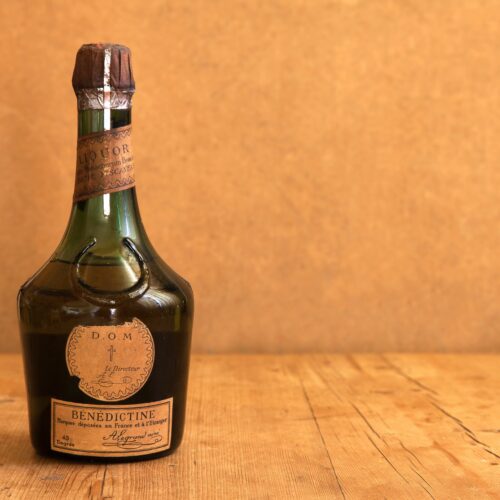
Best Substitutes For Benedictine
Ingredients
- Chartreuse
- Galliano
- Strega
- Drambuie
- Barenjager
- Krupnik
- Grand Marnier
- Chambord
Instructions
- From the list of substitutes above, pick your favorite to use in its place.
- Use your imagination and be creative with these substitute recipes!



